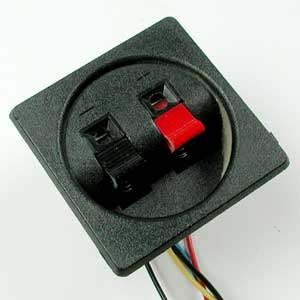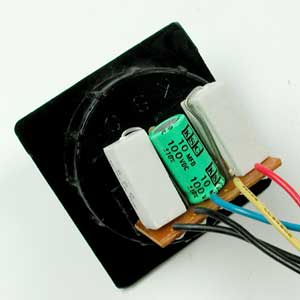

To produce quality sound over a wide frequency range more effectively, you can break the entire range into smaller chunks that are handled by specialized drivers. Quality loudspeakers will typically have a woofer, a tweeter and sometimes a midrange driver, all included in one enclosure.
Of course, to dedicate each driver to a particular frequency range, the speaker system first needs to break the audio signal into different pieces -- low frequency, high frequency and sometimes mid-range frequencies. This is the job of the speaker crossover.
The most common type of crossover is passive, meaning it doesn't need an external power source because it is activated by the audio signal passing through it. This sort of crossover uses inductors, capacitors and sometimes other circuitry components. Capacitors and inductors only become good conductors under certain conditions. A crossover capacitor will conduct the current very well when the frequency exceeds a certain level, but will conduct poorly when the frequency is below that level. A crossover inductor acts in the reverse manner -- it is only a good conductor when the frequency is below a certain level.
When the electrical audio signal travels through the speaker wire to the speaker, it passes through the crossover units for each driver. To flow to the tweeter, the current will have to pass through a capacitor. So for the most part, the high frequency part of the signal will flow on to the tweeter voice coil. To flow to the woofer, the current passes through an inductor, so the driver will mainly respond to low frequencies. A crossover for the mid-range driver will conduct the current through a capacitor and an inductor, to set an upper and lower cutoff point.
There are also active crossovers. Active crossovers are electronic devices that pick out the different frequency ranges in an audio signal before it goes on to the amplifier (you use an amplifier circuit for each driver). They have several advantages over passive crossovers, the main one being that you can easily adjust the frequency ranges. Passive crossover ranges are determined by the individual circuitry components -- to change them, you need to install new capacitors and inductors. Active crossovers aren't as widely used as passive crossovers, however, because the equipment is much more expensive and you need multiple amplifier outputs for your speakers.
Crossovers and drivers can be installed as separate components in a sound system, but most people end up buying speaker units that house the crossover and multiple drivers in one box. In the next section, we'll find out what these speaker enclosures do and how they affect the speaker's sound quality.


